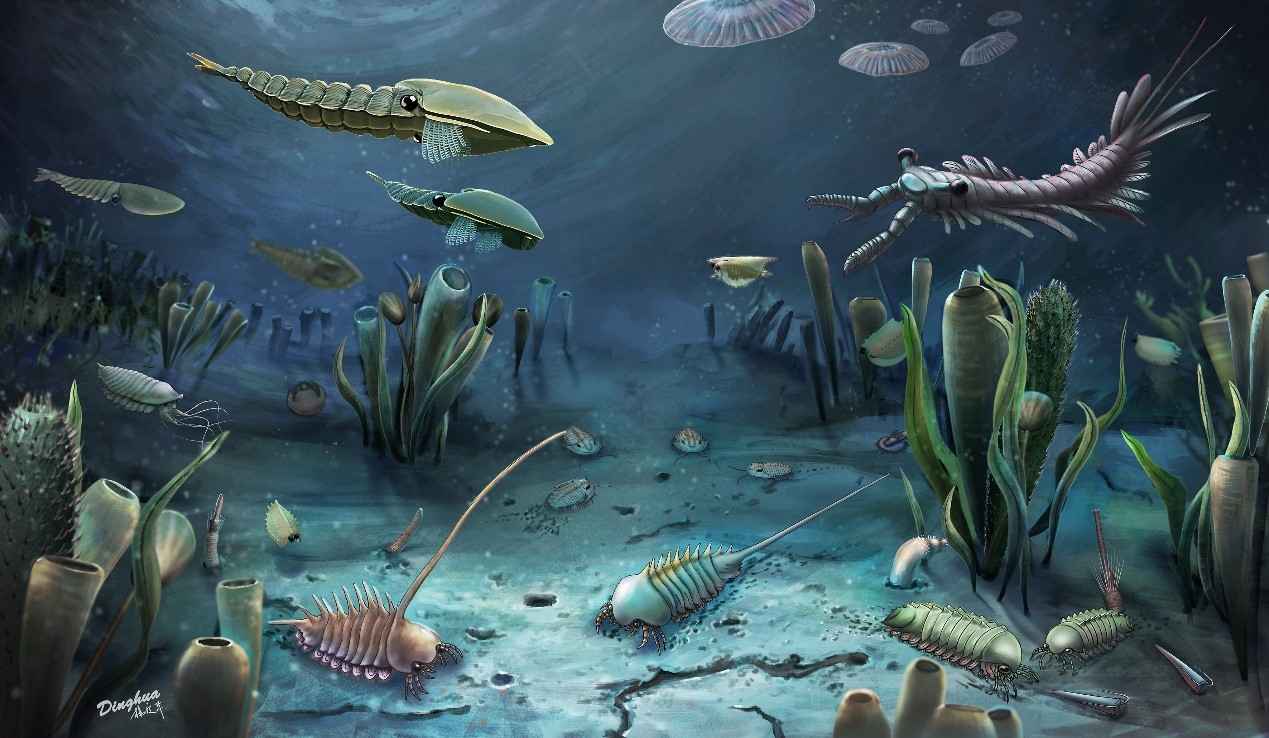A research team from the Nanjing Institute of Geology and Palaeontology of the Chinese Academy of Sciences (NIGPAS) has discovered a new middle Cambrian (5.04 mya) konservat-lagerstatte in the Zhangxia Formation in Shandong Province, North China, and named it the Linyi Lagerstatte.
The Linyi Lagerstatte provides a new window into the morphological disparity, community structure, and paleogeographic distribution of marine fauna following the Cambrian explosion.
Their findings were published in National Science Review on April 5.
The rapid appearance of major animal groups and complex marine communities during the Cambrian explosion is recorded in large part in Burgess Shale-type (BST) lagerstatten.
Nevertheless, most of the well-known Cambrian lagerstatten are restricted to a few terranes, with most of them occurring in South China or Laurentia (the core of present-day North America).
This striking geographical imbalance is particularly evident in the middle Cambrian, with the major Miaolingian lagerstatten, including the Burgess Shale in British Columbia (western Canada) and five lagerstatten in the Great Basin (western USA), being located predominantly in Laurentia. The large temporospatial discrepancy of distribution of the soft-bodied fossil lagerstatten limits our understanding of the Cambrian explosion of animals on Earth.
The limited known spatial distribution of Cambrian lagerstatten thus underscores the importance of the newly discovered Miaolingian Linyi Lagerstatte.
The new assemblage contains a variety of well-preserved soft-bodied fossils, among which the non-trilobite arthropods, particularly the mollisoniids and radiodonts, are the most important groups. The Linyi Lagerstatte is remarkable for its excellent preservation of arthropod limbs, eyes, and guts, with these well-preserved fossils promising to yield new anatomical data bearing on the early evolution of animals.
"The close similarity in taxonomy between the Linyi Lagerstatte of North China and those of Laurentian lagerstatten suggests that North China may have provided a biogeographic link between East Gondwana and Laurentia," said Prof. ZHAO Fangchen, corresponding author of the study.
North China is now an important region for investigating the early evolution of middle Cambrian animals, and its Miaolingian deposits have great potential for yielding additional exceptional biotas.
Since the discovery of the Chengjiang Biota in 1984, South China has gradually become the principal area for the study of early Cambrian lagerstatte. The discovery of the Linyi Lagerstatte may also open a new chapter in the study of middle Cambrian BST deposits in North China.

Life on the platform margin of the Miaolingian Sea, North China, based on data from the Linyi Lagerstatte
Contact:
LIU Yun, Propagandist
Email: yunliu@nigpas.ac.cn
Nanjing Institute of Geology and Palaeontology, Chinese Academy of Sciences
Nanjing, Jiangsu 210008, China
